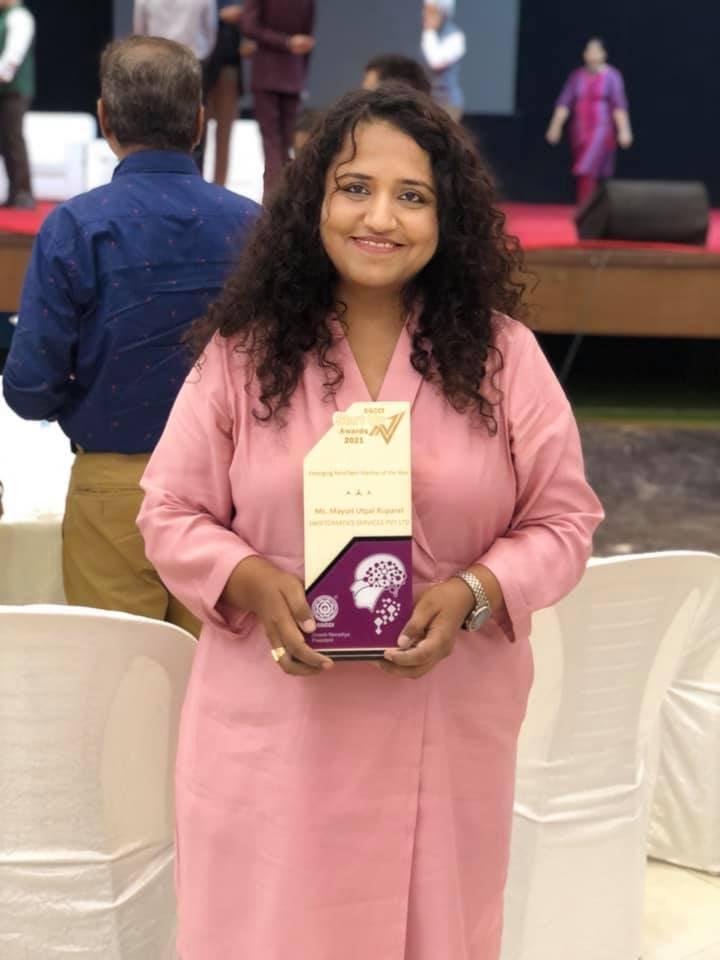- An academic year is divided into two semesters and an examination is conducted at the close of each semester.
Each paper will carry 75 marks, Theory Semester Pattern.
Each paper will carry 75 marks, Theory Semester Pattern.
-
30 out of 75 in Theory, 10 out of 25 in Internal. (Combined marks of Sem I & Sem II).
Semester
Course
Paper Name
Module
Course Code
Semester I
FYBA
Economic Theory (Micro Economics-I)
I Micro Economics I: Introduction
Meaning, nature, scope, significance and limitations of micro economics. Ceteris
Paribus – use and significance. Concept and types of equilibrium: stable, unstable,
static and dynamic equilibrium – partial equilibrium and general equilibrium
positive economics and normative economics, managerial economics. Basic
concepts – wealth, welfare and scarcity. Basic tools of economics analysis
(equations and functions, graphs and diagrams, slope and intercepts)
UAECO101
II Consumers Behaviour and Demand
Marishallian Approach: Equi-marginal utility, Law of demand- Determinants of
demand. Elasticity of demand and its measurement: Price- Income- Cross and
Promotional elasticity of demand. Consumer’s Surplus.
Hicksian Approach: Indifference curves – properties of Indifference Curve,
Consumer’s Equilibrium, Price effect, Income effect and substitution effect -
Derivation of demand from Price Consumption Curve (PCC) – Giffen’s paradox.
Samuelson Approach: Revealed Preference Theory.
III Production and Cost Analysis
Concept of production function: short run and long run - Cobb-Douglass
production function. Isoquants - iso-cost line - producer’s equilibrium. Law of
variable proportion and Law of returns to scale - Economies of scale - Economies
of scope.Concepts of costs: Money and real cost, Opportunity cost, Social cost, Private cost-
Derivation of short run and long run cost curves – Learning curve.
Semester II
FYBA
Economic Theory (Micro Economics-I)
I Micro Economics I: Theory of Firm
Concepts of revenue: Total Revenue, Average Revenue and Marginal Revenue –
Relationship between TR, AR and MR under perfect and imperfect competition -
AR, MR and elasticity. Objectives of a Firm–Analysis of Equilibrium of a firm:
TC-TR Approach - MC-MR Approach – Break-Even Analysis
UAECO102
II Market Structure
Perfect Competition: Features - Short-run Equilibrium of the Firm and Industry -
Long Run Equilibrium of the Firm and Industry. Monopoly: Features - Short-run
Equilibrium of the Monopolist under Different Cost Conditions and Long-run
Equilibrium of the Monopolist - Discrimination Monopoly: Equilibrium under
Discriminating Monopoly - Dumping.
Monopolistic Competition: Features, Equilibrium in the Short-run and Long-run –
Wastages under Monopolistic Competition – Oligopoly: Features of Oligopoly.
III Pricing Methods and Capital Budgeting
Methods: Marginal Cost Pricing - Full Cost Pricing - Multi product pricing
– Limit Pricing: Bain’s Model. Meaning and importance of Capital Budgeting: Methods of Capital Budgeting: Pay Back Period [PBP]- Net Present Value [NPV].
Semester III
SYBA
Macro Economics Paper - II
Unit I : Introduction:
Meaning and scope of Macro Economics - Concepts of National Income
aggregates: GNP, NNP, GDP, NDP, Per Capita Income, Personal Income and
Disposal Income - Methods and difficulties in Measurement of National Income -
Circular flow of Income : closed (Two and Three sector Models) open economy
models - Trade cycles : Features and phases
Unit II : Consumption, Investment and Employment
Say’s law of market - Theory of Effective demand – Consumption function -
Investment function – Marginal Efficiency of Capital and rate of interest -
Investment multiplier and Accelerator.
Unit III: Money and inflation:
Meaning and function of Money - Supply of money: Constituents – Determinants
of money supply. Velocity of circulation of money - RBI’s approach to
measurement of money supply (Liquidity measures).
Demand for Money: Classical - Neo-classical - Keynesian- Friedman’s approaches.
Inflation: Types – Causes – Effects – Measures to control inflation.
Semester IV
SYBA
Macro Economics- Paper - II
Unit I : Banking in India
Commercial Banks: Functions - Multiple Credit Creation Process and its
limitations - Performance of commercial banks since 1991.
Central Bank: Functions of RBI – Monetary policy: Objectives and Instruments –
Narsimham Committee Report of 1998.
Unit II : Financial Markets:
Money Market: Components – Instruments - Features of Indian Money market.
Money market reforms in India since 1991.
Capital market: Role of capital market in economic development, Structure of
capital market in India (Primary and Secondary markets), Mutual funds. Securities
and Exchange Board of India (SEBI).
Unit III : Public Finance:
Nature and Scope of Public Finance - Sources of Public Revenue – Canons of
taxation – Merits and demerits of direct and indirect taxes. Public Expenditure:
Semester III
SYBA
INDIAN ECONOMY PAPER-III
UNIT - I: Economic Growth (Pre and Post Reform Period
Changes in the growth of national income and per capita income – Changes in the sectoral
composition of national income – changes in the occupational structure – Changes in the
demographic features during 1951 – 2011 - India as an emerging economy in the world -
Problem of poverty and income inequalities – Nature of unemployment – Causes of inflation –
Policy measures to reduce poverty, income inequalities and inflation –
UNIT - II: Agriculture and the economy
Changing Role of agriculture in the economy– Land reforms – New Agricultural Strategy –
Trends in production and productivity – Rural credit and role of rural financial institutions –
Agricultural Marketing – Agricultural price policy – WTO and agriculture – Issue of Food
Security.
UNIT - III: Secondary and Tertiary Sector
Trends in industrial production and productivity during 1951 -91 – Industrial policy 1991 and
changes in the industrial structure – Disinvestment policy – Significance of small scale industries
– SSI Policy of the Government of India – Special Economic Zones – WTO and Industry -
Service sector in the process of economic development - Contribution of services to GDP growth
in India – Role of infrastructure in economic development
SEMESTER- IV
SYBA
INDIAN ECONOMY PAPER-III
UNIT - I: Financial System and the Economy
Structure of the Indian financial system – Nationalisation of commercial banks – Performance of
commercial banks in the pre-reform period – Banking Sector reforms 1991 and 1998 – Progress
of scheduled commercial banks since 1991 – Measures of money supply and Liquidity -
Constituents of the money market – Money market reforms – Monetary policy of the RBI –
Growth of capital market since 1980 – Capital market reforms – Role of SEBI – Growth of
insurance business in India – Role of IRDA
UNIT - II: Finances of the Government of India
Union Government Budget – Appraisal of trends in revenue and expenditure in the pre and post-
reform period – Tax revenues of Government of India - Tax reforms and changes in tax policy
since 1991 – Changes in the composition of expenditure of Government of India - Fiscal Deficits
– Trends in internal and external liabilities of Government of India – Appraisal of Union
Government transfer of financial resources to the States – Recommendations of The Thirteenth
Finance Commission – Role of fiscal policy
UNIT - III: International Trade and Payments
Appraisal of India’s foreign trade and payments before 1991 – Analysis of trends in value,
composition and direction of exports and imports since 1991- India’s Balance of Payments since
1991 – Exchange rate policy and Rupee convertibility – Trends in capital flows since 2001
SEMESTER –V
TYBA
IV ADVANCED ECONOMIC THEORY
Unit I: Decision making under Oligopoly
Cournot’s Model, Collusion: Cartels and Price Leadership, Game Theory: Nash Equilibrium and
Prisoner’s Dilemma, Public Goods Games.
Unit II: Theory of Factor Pricing,
Factor Pricing in Perfectly and Imperfectly Competitive Markets, Theory of Economic Rent,
Wage Determination under Bilateral Monopoly and the Role of Collective Bargaining, ,
Loanable Funds Theory; Risks, Uncertainty and Theory of Profits
Unit III: General Equilibrium and Social Welfare
Interdependence in the Economy – General Equilibrium and its Existence-The Pareto Optimality
Condition of Social Welfare, Marginal Conditions for Pareto Optimal Resource Allocation,
Perfect Competition and Pareto Optimality; - Kaldor- Hicks Compensation Criterion - Arrow’s
Impossibility Theorem.
Unit IV: Economics of Information
Economics of Search: Search Costs, Information Failure and Missing Markets - Asymmetric
Information: The Market for Lemons, Adverse Selection: Insurance Markets, Market Signaling,
The Problem of Moral Hazard, The Principal-Agent Problem, Efficiency Wage Theory.
SEMESTER –VI
TYBA
IV ADVANCED ECONOMIC THEORY
Unit I: IS-LM Model
Money Market Equilibrium: The LM Curve; The Product Market Equilibrium: The IS
Curve, The IS and LM curves combined – Factors influencing Equilibrium income and the
interest Rate, Monetary influence: Shift in the LM schedule- Real influences: Shift in the IS
schedule; Relative Effectiveness of Monetary and Fiscal Policies: Policy Effectiveness and the
Slope of the IS schedule - Policy Effectiveness and the Slope of the LM schedule; Aggregate
Supply Curve, Aggregate Demand Curve and Determination of Price level - Phillips Curve.
Unit II: International Trade
Classical Theory of International Trade, Haberler’s Theory of Opportunity Cost; Heckscher –
Ohlin Theory of Trade - Terms of Trade: Gross, Net and Income - Law of Reciprocal Demand
and Offer Curves- Equilibrium Price in International Trade, Commercial Policy - Tariffs and
their effects.
Unit III: Open Economy Macroeconomics
Determination of Exchange Rate in Foreign Exchange Markets: Fixed and Flexible, Nominal and
Real Exchange rate - Mundell - Fleming Model- the Impossible Trinity; - Purchasing Power
Parity Theory. Balance of Payments: Components, Disequilibrium and Adjustments - Currency
Crisis.
Unit IV: Public Economics
Public Goods, Externalities, Market Failure- Role of the state - the Coase Theorem - Principles
of Taxation: Ability to pay-principle and Benefit Principle -Concepts of Impact, Incidence and
Shifting of a Tax – Dalton’s & Musgrave’s concepts of Tax-Incidence - Demand and Supply
Theory of Incidence, Excess Burden of Taxation.
Semester V
TYBA
GROWTH AND DEVELOPMENT V
UNIT-I Meaning of Development
Development and related concepts: economic growth, economic development, human
development, sustainable development, Sen’s views on development, Millennium
Development Goals (MDGs); Measurement: Income indicators and their limitations, Human
Development Index, Gender-related Development Index.
ECOGAD502
UNIT-II Theories of Development
Rostow’s stages of growth, Big push, Critical Minimum Effort, Coordination Failure and
Multiple equilibria, Harrod-Domar growth model, Structural change and Lewis’ model of
unlimited supplies of labour, Solow’s growth theory, Schumpeter’s theory of development.
UNIT-III Issues in Development
Rural-urban divide, development and environment, inclusive growth, rural credits,
microfinance, infrastructure in development.
UNIT-IV Poverty, Inequality and Development
Measurement of poverty, Head-Count Index and Poverty Gap Indices, policy options for
alleviation of poverty, measurement of income inequality, economic growth and income
inequality – Kuznet’s inverted U hypothesis, impact of inequality on development, informal
sector.
SEMESTER –VI
TYBA
GROWTH AND DEVELOPMENT V
UNIT-I Population and Human Resources
Demographic transition, microeconomic household theory of fertility, approaches to
population policy, Human Capital and its role in development, Health and Nutrition in
development.
UNIT-II Structural Transformation
The Kuznets-Clark thesis, Causes of urbanization, migration and development, policies for
the urban informal sector, women in the informal sector, Role of agriculture in economic
development, policies for rural development
UNIT-III International Aspects of Development
Trade strategies for development: export promotion versus import substitution, financing of
balance of payments deficits, foreign direct investment and multinational corporations,
foreign portfolio investments and developing countries.
UNIT-IV Agencies of Development
Market, State, and Voluntary sector as agencies of development, Types of Planning –
Changing role of development planning, Models of development planning, Gender
budgeting.
Role of International Agencies in development – World Bank and IMF – structural
adjustment and stabilization, WTO
Semester V
TYBA
INDUSTRIAL AND LABOUR ECONOMICS VI
Unit I - Introduction
Meaning and Scope of Industrial Economics
Industrial Profile : Private sector - Performance and Problems; Cooperatives - features, types, merits and demerits; Public Sector - Role, Performance and Problems Diversification and Industrial Combinations - Motives for Mergers and Acquisitions
ECOILEB503
Unit II - Industrial Location and Problem of Regional Imbalance
Determinants of Industrial Location Theories of Industrial Location - Weber's and Sargent Florence's theories Dispersion of Industries and the Problem of Regional Imbalance
Unit III – Industrial Productivity and Industrial Sickness
Concept and Measurement of Industrial Productivity Factors Affecting Industrial Productivity Industrial Sickness - Causes, Effects and Remedial Measures Rationalisation - Concept, Aspects and Impact
Unit IV - Industrial Development in India
New Industrial Policy, 1991; Disinvestment Policy; Micro, Small and Medium
Enterprises Development Act, 2006; National Manufacturing Policy, 2011
Recent Trends in India's Industrial Growth
Role of MNCs in the Indian Economy - Merits and Demerits
Issues in Industrial Proliferation and Environment Preservation; Pollution Control Policies
SEMESTER – VI
TYBA
INDUSTRIAL AND LABOUR ECONOMICS VI
Unit I – Introduction – Indian Labour Market
Characteristics of the Indian Labour Market Child Labour and Female Labour – Problems and Measures
Globalisation and Indian Labour Market Labour Market Reforms – Exit Policy and Need for Safety Nets
Second National Commission on Labour
Unit II – Trade Unionism
Definition and Functions of Trade Unions Historical Evolution of Trade Unions in India and Their Present Status Problems of Trade Unions in India Role of Outside Leadership
Unit III – Industrial Relations
Causes of Industrial Disputes and Their Settlement Mechanism Collective Bargaining – Concept, Features, Importance and Pre-requisites for Successful Collective Bargaining Collective Bargaining in India Workers’ Participation in Management – Concept, Objectives and Forms of Workers’
Participation in India
Unit IV – Labour Welfare and Social Security
Concept, Theories and Principles of Labour Welfare
Agencies for Labour Welfare
Role of the Labour Welfare Officer
Social Security – Concept; Social Assistance and Social Insurance
International LabourOrganisation and Its Impact on Indian Labour Legislations
Semester V
TYBA
RESEARCH METHODOLOGY VII
UNIT - I : Introduction to Concept of Research
Nature, Scope & Purpose of social research
Basic assumptions of research
Significance of social sciences research
Objectivity in social sciences research
Types of research : pure & applied research; formulative or exploratory research
descriptive research, historical research, , experimental research, survey research
Ethical issues relating to research
Major Difficulties in the Area of economic research
ECOREMB504
UNIT - II : Elements of Research Methodology
I. Steps in Research process:
Identification, selection and formulation of research problem – sources of research problem –
criteria of a good research problem
Review of literature
Formulation of hypothesis
Preparing Research Design: Definition, Concepts, and types– exploratory, descriptive and
diagnostic, experimental and Analytical research designs
Collecting and analysing the data
Interpretation and report writing
engine like Google, Yahoo etc- Use of advanced search techniques
Unit - III :Sources of Data for Research:
I. Types of data sources: Primary and Secondary, choice between primary and secondary data
Primary data-Meaning and Collection methods
i. Observational method
ii. Interview technique
iii. Design of Schedule and Questionnaire
iv. Survey method and Field Visits
v. Case Study as a method
Major Sources of Secondary data: Meaning, advantages, Relevance, limitations and cautions
of secondary data.
II. Sampling Technique: Census and sample survey- Essentials of a good Sampling -
Advantages and limitations of sampling
Methods of sampling:
i. random sampling : simple or unrestricted random sampling- mixed or stratified
random sampling, systematic or quasi random sampling – multistage or cluster
random sampling - sequential random sampling
ii. non random sampling : judgement or purposive sampling–convenience samplingaccidental
sampling – quota sampling
Sampling and Non-sampling errors - Sample size – selecting an appropriate sampling technique
UNIT-IV : Processing and Analysis of Data
Classification, Tabulation and Graphical presentation of socio-economic data
An introduction to Statistical Analytical Tools – Measures of Central Tendency - Measures
of Variation : absolute and relative measures – Quartile deviation, standard deviation
coefficient of variation.- Skewness : meaning and Measurement (Karl Pearson’s and
Bowley’s methods)
Preliminaries of Computer Applications in Data organization & Data Processing
Introduction to spreadsheet application, features and functions, Using formulas and
functions, Data storing, Features for Statistical data analysis, Graphical representation of
data, Generating charts/ graph and other features
Semester–VI
TYBA
RESEARCH METHODOLOGY VII
UNIT-I : Statistical applications in research
Methods of studying Correlation- measurement of simple correlation : graphic method
:scatter diagram - coefficient of correlation - Karl Pearson and rank correlationinterpretation
of r = ± 1
Linear Regression analysis: meaning, regression lines, regression coefficients, regression
equations ,relationship between correlation and regression
Analysis of Time Series – components –trend analysis- moving averages (3,4 and 5 yearly)
- method of least square
UNIT-II : Index numbers
Meaning – classification – problems encountered while constructing index numbers- uses and
limitation of index numbers
Methods of constructing index numbers:
Simple index: i) aggregate method ii) simple average of relatives method
Weighted index : Laspeyer’s, Paache’s and Fisher’s index – weighted average of
relatives method
Chain based index – concepts of Base shifting, splicing, and deflating
Consumer price index : meaning, need and construction – methods : aggregate
expenditure method and family budget method
UNIT-III : Hypothesis formulation and Hypothesis Testing
Definition and functions of hypothesis –Criteria of workable hypothesis – forms and
sources of hypothesis
Concepts in Testing of Hypothesis : Universe / Population, parameter and statistic , Null
and Alternative Hypotheses, Levels of Significance, critical region, Type I and type II
errors - Point and Interval Estimates
Unit –IV : Research Report Writing
Types of Research Report: Technical, Popular, Interim, Summary, Article
_Format of a Research Report
_Principles of writing the Research Report: Organization and Style - Contents-Styles of
reporting- Steps in drafting Reports- Editing the final draft-Evaluating the final draft -
Organization of the Research Report: Preliminaries, Contents of Report, Structuring the Report:
Chapter format- Pagination- Identification- Using quotations- Presenting footnotes –
abbreviations- Presentation of tables and figures- Referencing- Documentation-Use and format
of appendices- Indexing - Bibliography, Appendices
Semester V
TYBA
EVALUATION OF ECONOMIC IDEAS VIII
UNIT – I: Pre-Classical School
Mercantilism: Main features. Physiocracy: Natural Order, Tableau Economique,
Taxation.
ECOEEIB505
UNIT –II: Classical Period
Adam Smith: division of labour, theory of value, Capital Accumulation,
Distribution, Views on international trade. David Ricardo: Theory of value, Theory of
Distribution, Doctrine of Rent, Views on international trade. Thomas r, Malthus: Theory
of Population. Karl Marx: Materialistic Interpretation of History, Theory of value,
Surplus Value, Profit and Crisis of Capitalism.
UNIT – III: Reconstruction and Neo-Classical
Jevons, Menger, Walara, BohamBawerk, Pigou: welfare economics
Marshall: Consumer’s Surplus, external and internal economies, Quasi Rent,
Schumpeter: Role of entrepreneur and innovation
UNIT – IV: Keynesian Ideas
The aggregate economy, Liquidity Preference Theory and Liquidity Trap,
Marginal Efficiency of Capital, wage rigidities, underemployment equilibrium,
Role of Fiscal Policy: deficit spending and public works, Multiplier Principle
SEMESTER – VI
TYBA
EVALUATION OF ECONOMIC IDEAS VIII
UNIT –I: Economic Thought of Koutilya
Koutilya on Economic Policies, Welfare State, Principal of Taxation
UNIT –II:Economic Ideas of DadabhaiNaoroji, Ranade, Gokhale, R.C.Datt and
Agarkar
DadabhaiNaoroji’s Theory of Drain
Ranade’s case of Protection
G.K. Gokhale on development and welfare
R.C. Dutt on Imperialism, Land Tax and Public Finance
Gopal Ganesh Agarkar
UNIT – III: Economic Ideas of Phule, Gandhi and Ambedkar
Mahatma Phule’s views on agriculture, reasons of farmer’s poverty
Self Sufficient Village Economy, Appropriate Technology,
Containment of Wants, Bread Labour, Dignity of Labour, Trusteeship, Swadeshi,
Women Empowerment, Sarvodaya, Role of the State, Relevance of Gandhian Economic
ideas in present contest.
Ambedkar’s case for state socialism, Problems of Rupee, Public Finance
UNIT – IV: Nobel Prize Winners in Economics
Myrdal(1974), Robert A. Mundell(1999), A. K. Sen(1998),
Joseph Stiglitz(2001), Paul Krugman(2008)
Semester V
TYBA
EXPORT MANAGEMENT IX
UNIT-I Significance of Export
a) Export Management as a profession, nature and scope of export management, functions
and qualities required by an export manager, composition and direction of exports of
India since 1991.
ECOEXMB506
UNIT-II Production Design Strategies
Product design strategy, product development process, product positioning, branding and
its significance, brand piracy.
UNIT-III Regulation of Foreign Trade
Meaning and Objectives of Tariff and non tariff barriers quotos changes in tariff and non tariff
barriers since 1991.
UNIT-IV International Trade agreement
International Trade Agreement WTO-SAARC-ASEAN UNCTED-EU-BRICS
Semester– VI
TYBA
EXPORT MANAGEMENT IX
UNIT-I Trapping Foreign Market
Tapping Foreign Markets, Trade delegation-Trade Authority of India, Exhibition-Trade
through Trade Fairs & Festivals ITPO Maintaining Foreign Office.
UNIT-II Export Pricing
Export Pricing-Meaning, Objectives, Cost Factors – Pricing Strategies – Export
assistances – calculation of FOB.
UNIT-III Export Finance & Export Promotion
Pre-shipment & Post Shipment Finance – Bank assistance - ECGC , Exim Bank, Liberalized
exchange rate mechanism (Lerms) Export promotion Bank assistance & Incentives – EPZ ,
Commodity Boards.Role of STC & MMTC.
UNIT-IV Export Document & Incentives
A) Letter of credit, its mechanism, types and utility, certificate of origin, shipping bill, Mate’s
receipt, bill of lading, shipping forwarding insurance customs inspection banking procedure .
B) Incentives to Indian exporters since 1991.
| Semester | Course | Paper Name | Module | Course Code |
|---|---|---|---|---|
| Semester I | FYBA | Economic Theory (Micro Economics-I) | I Micro Economics I: Introduction Meaning, nature, scope, significance and limitations of micro economics. Ceteris Paribus – use and significance. Concept and types of equilibrium: stable, unstable, static and dynamic equilibrium – partial equilibrium and general equilibrium positive economics and normative economics, managerial economics. Basic concepts – wealth, welfare and scarcity. Basic tools of economics analysis (equations and functions, graphs and diagrams, slope and intercepts) |
UAECO101 |
| II Consumers Behaviour and Demand Marishallian Approach: Equi-marginal utility, Law of demand- Determinants of demand. Elasticity of demand and its measurement: Price- Income- Cross and Promotional elasticity of demand. Consumer’s Surplus. Hicksian Approach: Indifference curves – properties of Indifference Curve, Consumer’s Equilibrium, Price effect, Income effect and substitution effect - Derivation of demand from Price Consumption Curve (PCC) – Giffen’s paradox. Samuelson Approach: Revealed Preference Theory. |
||||
|
III Production and Cost Analysis Concept of production function: short run and long run - Cobb-Douglass production function. Isoquants - iso-cost line - producer’s equilibrium. Law of variable proportion and Law of returns to scale - Economies of scale - Economies of scope.Concepts of costs: Money and real cost, Opportunity cost, Social cost, Private cost- Derivation of short run and long run cost curves – Learning curve. |
||||
| Semester II | FYBA | Economic Theory (Micro Economics-I) |
I Micro Economics I: Theory of Firm Concepts of revenue: Total Revenue, Average Revenue and Marginal Revenue – Relationship between TR, AR and MR under perfect and imperfect competition - AR, MR and elasticity. Objectives of a Firm–Analysis of Equilibrium of a firm: TC-TR Approach - MC-MR Approach – Break-Even Analysis |
UAECO102 |
| II Market Structure Perfect Competition: Features - Short-run Equilibrium of the Firm and Industry - Long Run Equilibrium of the Firm and Industry. Monopoly: Features - Short-run Equilibrium of the Monopolist under Different Cost Conditions and Long-run Equilibrium of the Monopolist - Discrimination Monopoly: Equilibrium under Discriminating Monopoly - Dumping. Monopolistic Competition: Features, Equilibrium in the Short-run and Long-run – Wastages under Monopolistic Competition – Oligopoly: Features of Oligopoly. |
||||
| III Pricing Methods and Capital Budgeting Methods: Marginal Cost Pricing - Full Cost Pricing - Multi product pricing – Limit Pricing: Bain’s Model. Meaning and importance of Capital Budgeting: Methods of Capital Budgeting: Pay Back Period [PBP]- Net Present Value [NPV]. |
Semester III | SYBA | Macro Economics Paper - II | Unit I : Introduction: Meaning and scope of Macro Economics - Concepts of National Income aggregates: GNP, NNP, GDP, NDP, Per Capita Income, Personal Income and Disposal Income - Methods and difficulties in Measurement of National Income - Circular flow of Income : closed (Two and Three sector Models) open economy models - Trade cycles : Features and phases |
| Unit II : Consumption, Investment and Employment Say’s law of market - Theory of Effective demand – Consumption function - Investment function – Marginal Efficiency of Capital and rate of interest - Investment multiplier and Accelerator. |
||||
| Unit III: Money and inflation: Meaning and function of Money - Supply of money: Constituents – Determinants of money supply. Velocity of circulation of money - RBI’s approach to measurement of money supply (Liquidity measures). Demand for Money: Classical - Neo-classical - Keynesian- Friedman’s approaches. Inflation: Types – Causes – Effects – Measures to control inflation. |
||||
| Semester IV | SYBA | Macro Economics- Paper - II | Unit I : Banking in India Commercial Banks: Functions - Multiple Credit Creation Process and its limitations - Performance of commercial banks since 1991. Central Bank: Functions of RBI – Monetary policy: Objectives and Instruments – Narsimham Committee Report of 1998. |
|
|
Unit II : Financial Markets: Money Market: Components – Instruments - Features of Indian Money market. Money market reforms in India since 1991. Capital market: Role of capital market in economic development, Structure of capital market in India (Primary and Secondary markets), Mutual funds. Securities and Exchange Board of India (SEBI). |
||||
|
Unit III : Public Finance: Nature and Scope of Public Finance - Sources of Public Revenue – Canons of taxation – Merits and demerits of direct and indirect taxes. Public Expenditure: |
||||
| Semester III | SYBA | INDIAN ECONOMY PAPER-III |
UNIT - I: Economic Growth (Pre and Post Reform Period Changes in the growth of national income and per capita income – Changes in the sectoral composition of national income – changes in the occupational structure – Changes in the demographic features during 1951 – 2011 - India as an emerging economy in the world - Problem of poverty and income inequalities – Nature of unemployment – Causes of inflation – Policy measures to reduce poverty, income inequalities and inflation – |
|
| UNIT - II: Agriculture and the economy Changing Role of agriculture in the economy– Land reforms – New Agricultural Strategy – Trends in production and productivity – Rural credit and role of rural financial institutions – Agricultural Marketing – Agricultural price policy – WTO and agriculture – Issue of Food Security. |
||||
| UNIT - III: Secondary and Tertiary Sector Trends in industrial production and productivity during 1951 -91 – Industrial policy 1991 and changes in the industrial structure – Disinvestment policy – Significance of small scale industries – SSI Policy of the Government of India – Special Economic Zones – WTO and Industry - Service sector in the process of economic development - Contribution of services to GDP growth in India – Role of infrastructure in economic development |
||||
| SEMESTER- IV | SYBA | INDIAN ECONOMY PAPER-III | UNIT - I: Financial System and the Economy Structure of the Indian financial system – Nationalisation of commercial banks – Performance of commercial banks in the pre-reform period – Banking Sector reforms 1991 and 1998 – Progress of scheduled commercial banks since 1991 – Measures of money supply and Liquidity - Constituents of the money market – Money market reforms – Monetary policy of the RBI – Growth of capital market since 1980 – Capital market reforms – Role of SEBI – Growth of insurance business in India – Role of IRDA |
|
|
UNIT - II: Finances of the Government of India Union Government Budget – Appraisal of trends in revenue and expenditure in the pre and post- reform period – Tax revenues of Government of India - Tax reforms and changes in tax policy since 1991 – Changes in the composition of expenditure of Government of India - Fiscal Deficits – Trends in internal and external liabilities of Government of India – Appraisal of Union Government transfer of financial resources to the States – Recommendations of The Thirteenth Finance Commission – Role of fiscal policy |
||||
| UNIT - III: International Trade and Payments Appraisal of India’s foreign trade and payments before 1991 – Analysis of trends in value, composition and direction of exports and imports since 1991- India’s Balance of Payments since 1991 – Exchange rate policy and Rupee convertibility – Trends in capital flows since 2001 |
||||
| SEMESTER –V | TYBA | IV ADVANCED ECONOMIC THEORY | Unit I: Decision making under Oligopoly Cournot’s Model, Collusion: Cartels and Price Leadership, Game Theory: Nash Equilibrium and Prisoner’s Dilemma, Public Goods Games. |
|
| Unit II: Theory of Factor Pricing, Factor Pricing in Perfectly and Imperfectly Competitive Markets, Theory of Economic Rent, Wage Determination under Bilateral Monopoly and the Role of Collective Bargaining, , Loanable Funds Theory; Risks, Uncertainty and Theory of Profits | ||||
|
Unit III: General Equilibrium and Social Welfare Interdependence in the Economy – General Equilibrium and its Existence-The Pareto Optimality Condition of Social Welfare, Marginal Conditions for Pareto Optimal Resource Allocation, Perfect Competition and Pareto Optimality; - Kaldor- Hicks Compensation Criterion - Arrow’s Impossibility Theorem. |
||||
| Unit IV: Economics of Information Economics of Search: Search Costs, Information Failure and Missing Markets - Asymmetric Information: The Market for Lemons, Adverse Selection: Insurance Markets, Market Signaling, The Problem of Moral Hazard, The Principal-Agent Problem, Efficiency Wage Theory. |
||||
| SEMESTER –VI | TYBA | IV ADVANCED ECONOMIC THEORY | Unit I: IS-LM Model Money Market Equilibrium: The LM Curve; The Product Market Equilibrium: The IS Curve, The IS and LM curves combined – Factors influencing Equilibrium income and the interest Rate, Monetary influence: Shift in the LM schedule- Real influences: Shift in the IS schedule; Relative Effectiveness of Monetary and Fiscal Policies: Policy Effectiveness and the Slope of the IS schedule - Policy Effectiveness and the Slope of the LM schedule; Aggregate Supply Curve, Aggregate Demand Curve and Determination of Price level - Phillips Curve. |
|
| Unit II: International Trade Classical Theory of International Trade, Haberler’s Theory of Opportunity Cost; Heckscher – Ohlin Theory of Trade - Terms of Trade: Gross, Net and Income - Law of Reciprocal Demand and Offer Curves- Equilibrium Price in International Trade, Commercial Policy - Tariffs and their effects. |
||||
|
Unit III: Open Economy Macroeconomics Determination of Exchange Rate in Foreign Exchange Markets: Fixed and Flexible, Nominal and Real Exchange rate - Mundell - Fleming Model- the Impossible Trinity; - Purchasing Power Parity Theory. Balance of Payments: Components, Disequilibrium and Adjustments - Currency Crisis. |
||||
|
Unit IV: Public Economics Public Goods, Externalities, Market Failure- Role of the state - the Coase Theorem - Principles of Taxation: Ability to pay-principle and Benefit Principle -Concepts of Impact, Incidence and Shifting of a Tax – Dalton’s & Musgrave’s concepts of Tax-Incidence - Demand and Supply Theory of Incidence, Excess Burden of Taxation. |
||||
| Semester V | TYBA | GROWTH AND DEVELOPMENT V |
UNIT-I Meaning of Development Development and related concepts: economic growth, economic development, human development, sustainable development, Sen’s views on development, Millennium Development Goals (MDGs); Measurement: Income indicators and their limitations, Human Development Index, Gender-related Development Index. |
ECOGAD502 |
|
UNIT-II Theories of Development Rostow’s stages of growth, Big push, Critical Minimum Effort, Coordination Failure and Multiple equilibria, Harrod-Domar growth model, Structural change and Lewis’ model of unlimited supplies of labour, Solow’s growth theory, Schumpeter’s theory of development. |
||||
| UNIT-III Issues in Development Rural-urban divide, development and environment, inclusive growth, rural credits, microfinance, infrastructure in development. |
||||
| UNIT-IV Poverty, Inequality and Development Measurement of poverty, Head-Count Index and Poverty Gap Indices, policy options for alleviation of poverty, measurement of income inequality, economic growth and income inequality – Kuznet’s inverted U hypothesis, impact of inequality on development, informal sector. |
||||
| SEMESTER –VI | TYBA | GROWTH AND DEVELOPMENT V |
UNIT-I Population and Human Resources Demographic transition, microeconomic household theory of fertility, approaches to population policy, Human Capital and its role in development, Health and Nutrition in development. |
|
| UNIT-II Structural Transformation The Kuznets-Clark thesis, Causes of urbanization, migration and development, policies for the urban informal sector, women in the informal sector, Role of agriculture in economic development, policies for rural development |
||||
| UNIT-III International Aspects of Development Trade strategies for development: export promotion versus import substitution, financing of balance of payments deficits, foreign direct investment and multinational corporations, foreign portfolio investments and developing countries. |
||||
| UNIT-IV Agencies of Development Market, State, and Voluntary sector as agencies of development, Types of Planning – Changing role of development planning, Models of development planning, Gender budgeting. Role of International Agencies in development – World Bank and IMF – structural adjustment and stabilization, WTO |
||||
| Semester V | TYBA | INDUSTRIAL AND LABOUR ECONOMICS VI | Unit I - Introduction Meaning and Scope of Industrial Economics Industrial Profile : Private sector - Performance and Problems; Cooperatives - features, types, merits and demerits; Public Sector - Role, Performance and Problems Diversification and Industrial Combinations - Motives for Mergers and Acquisitions |
ECOILEB503 |
| Unit II - Industrial Location and Problem of Regional Imbalance Determinants of Industrial Location Theories of Industrial Location - Weber's and Sargent Florence's theories Dispersion of Industries and the Problem of Regional Imbalance |
||||
| Unit III – Industrial Productivity and Industrial Sickness Concept and Measurement of Industrial Productivity Factors Affecting Industrial Productivity Industrial Sickness - Causes, Effects and Remedial Measures Rationalisation - Concept, Aspects and Impact |
||||
| Unit IV - Industrial Development in India New Industrial Policy, 1991; Disinvestment Policy; Micro, Small and Medium Enterprises Development Act, 2006; National Manufacturing Policy, 2011 Recent Trends in India's Industrial Growth Role of MNCs in the Indian Economy - Merits and Demerits Issues in Industrial Proliferation and Environment Preservation; Pollution Control Policies |
||||
| SEMESTER – VI | TYBA | INDUSTRIAL AND LABOUR ECONOMICS VI | Unit I – Introduction – Indian Labour Market Characteristics of the Indian Labour Market Child Labour and Female Labour – Problems and Measures Globalisation and Indian Labour Market Labour Market Reforms – Exit Policy and Need for Safety Nets Second National Commission on Labour |
|
| Unit II – Trade Unionism Definition and Functions of Trade Unions Historical Evolution of Trade Unions in India and Their Present Status Problems of Trade Unions in India Role of Outside Leadership |
||||
| Unit III – Industrial Relations Causes of Industrial Disputes and Their Settlement Mechanism Collective Bargaining – Concept, Features, Importance and Pre-requisites for Successful Collective Bargaining Collective Bargaining in India Workers’ Participation in Management – Concept, Objectives and Forms of Workers’ Participation in India |
||||
| Unit IV – Labour Welfare and Social Security Concept, Theories and Principles of Labour Welfare Agencies for Labour Welfare Role of the Labour Welfare Officer Social Security – Concept; Social Assistance and Social Insurance International LabourOrganisation and Its Impact on Indian Labour Legislations |
||||
| Semester V | TYBA | RESEARCH METHODOLOGY VII | UNIT - I : Introduction to Concept of Research Nature, Scope & Purpose of social research Basic assumptions of research Significance of social sciences research Objectivity in social sciences research Types of research : pure & applied research; formulative or exploratory research descriptive research, historical research, , experimental research, survey research Ethical issues relating to research Major Difficulties in the Area of economic research |
ECOREMB504 |
| UNIT - II : Elements of Research Methodology I. Steps in Research process: Identification, selection and formulation of research problem – sources of research problem – criteria of a good research problem Review of literature Formulation of hypothesis Preparing Research Design: Definition, Concepts, and types– exploratory, descriptive and diagnostic, experimental and Analytical research designs Collecting and analysing the data Interpretation and report writing engine like Google, Yahoo etc- Use of advanced search techniques |
||||
| Unit - III :Sources of Data for Research: I. Types of data sources: Primary and Secondary, choice between primary and secondary data Primary data-Meaning and Collection methods i. Observational method ii. Interview technique iii. Design of Schedule and Questionnaire iv. Survey method and Field Visits v. Case Study as a method Major Sources of Secondary data: Meaning, advantages, Relevance, limitations and cautions of secondary data. II. Sampling Technique: Census and sample survey- Essentials of a good Sampling - Advantages and limitations of sampling Methods of sampling: i. random sampling : simple or unrestricted random sampling- mixed or stratified random sampling, systematic or quasi random sampling – multistage or cluster random sampling - sequential random sampling ii. non random sampling : judgement or purposive sampling–convenience samplingaccidental sampling – quota sampling Sampling and Non-sampling errors - Sample size – selecting an appropriate sampling technique |
||||
| UNIT-IV : Processing and Analysis of Data Classification, Tabulation and Graphical presentation of socio-economic data An introduction to Statistical Analytical Tools – Measures of Central Tendency - Measures of Variation : absolute and relative measures – Quartile deviation, standard deviation coefficient of variation.- Skewness : meaning and Measurement (Karl Pearson’s and Bowley’s methods) Preliminaries of Computer Applications in Data organization & Data Processing Introduction to spreadsheet application, features and functions, Using formulas and functions, Data storing, Features for Statistical data analysis, Graphical representation of data, Generating charts/ graph and other features |
||||
| Semester–VI | TYBA | RESEARCH METHODOLOGY VII | UNIT-I : Statistical applications in research Methods of studying Correlation- measurement of simple correlation : graphic method :scatter diagram - coefficient of correlation - Karl Pearson and rank correlationinterpretation of r = ± 1 Linear Regression analysis: meaning, regression lines, regression coefficients, regression equations ,relationship between correlation and regression Analysis of Time Series – components –trend analysis- moving averages (3,4 and 5 yearly) - method of least square |
|
| UNIT-II : Index numbers Meaning – classification – problems encountered while constructing index numbers- uses and limitation of index numbers Methods of constructing index numbers: Simple index: i) aggregate method ii) simple average of relatives method Weighted index : Laspeyer’s, Paache’s and Fisher’s index – weighted average of relatives method Chain based index – concepts of Base shifting, splicing, and deflating Consumer price index : meaning, need and construction – methods : aggregate expenditure method and family budget method |
||||
| UNIT-III : Hypothesis formulation and Hypothesis Testing Definition and functions of hypothesis –Criteria of workable hypothesis – forms and sources of hypothesis Concepts in Testing of Hypothesis : Universe / Population, parameter and statistic , Null and Alternative Hypotheses, Levels of Significance, critical region, Type I and type II errors - Point and Interval Estimates |
||||
|
Unit –IV : Research Report Writing Types of Research Report: Technical, Popular, Interim, Summary, Article _Format of a Research Report _Principles of writing the Research Report: Organization and Style - Contents-Styles of reporting- Steps in drafting Reports- Editing the final draft-Evaluating the final draft - Organization of the Research Report: Preliminaries, Contents of Report, Structuring the Report: Chapter format- Pagination- Identification- Using quotations- Presenting footnotes – abbreviations- Presentation of tables and figures- Referencing- Documentation-Use and format of appendices- Indexing - Bibliography, Appendices |
||||
| Semester V | TYBA | EVALUATION OF ECONOMIC IDEAS VIII | UNIT – I: Pre-Classical School Mercantilism: Main features. Physiocracy: Natural Order, Tableau Economique, Taxation. |
ECOEEIB505 |
| UNIT –II: Classical Period Adam Smith: division of labour, theory of value, Capital Accumulation, Distribution, Views on international trade. David Ricardo: Theory of value, Theory of Distribution, Doctrine of Rent, Views on international trade. Thomas r, Malthus: Theory of Population. Karl Marx: Materialistic Interpretation of History, Theory of value, Surplus Value, Profit and Crisis of Capitalism. |
||||
| UNIT – III: Reconstruction and Neo-Classical Jevons, Menger, Walara, BohamBawerk, Pigou: welfare economics Marshall: Consumer’s Surplus, external and internal economies, Quasi Rent, Schumpeter: Role of entrepreneur and innovation |
||||
| UNIT – IV: Keynesian Ideas The aggregate economy, Liquidity Preference Theory and Liquidity Trap, Marginal Efficiency of Capital, wage rigidities, underemployment equilibrium, Role of Fiscal Policy: deficit spending and public works, Multiplier Principle |
||||
| SEMESTER – VI | TYBA | EVALUATION OF ECONOMIC IDEAS VIII | UNIT –I: Economic Thought of Koutilya Koutilya on Economic Policies, Welfare State, Principal of Taxation |
|
| UNIT –II:Economic Ideas of DadabhaiNaoroji, Ranade, Gokhale, R.C.Datt and Agarkar DadabhaiNaoroji’s Theory of Drain Ranade’s case of Protection G.K. Gokhale on development and welfare R.C. Dutt on Imperialism, Land Tax and Public Finance Gopal Ganesh Agarkar |
||||
| UNIT – III: Economic Ideas of Phule, Gandhi and Ambedkar Mahatma Phule’s views on agriculture, reasons of farmer’s poverty Self Sufficient Village Economy, Appropriate Technology, Containment of Wants, Bread Labour, Dignity of Labour, Trusteeship, Swadeshi, Women Empowerment, Sarvodaya, Role of the State, Relevance of Gandhian Economic ideas in present contest. Ambedkar’s case for state socialism, Problems of Rupee, Public Finance |
||||
| UNIT – IV: Nobel Prize Winners in Economics Myrdal(1974), Robert A. Mundell(1999), A. K. Sen(1998), Joseph Stiglitz(2001), Paul Krugman(2008) |
||||
| Semester V | TYBA | EXPORT MANAGEMENT IX | UNIT-I Significance of Export a) Export Management as a profession, nature and scope of export management, functions and qualities required by an export manager, composition and direction of exports of India since 1991. |
ECOEXMB506 |
| UNIT-II Production Design Strategies Product design strategy, product development process, product positioning, branding and its significance, brand piracy. |
||||
| UNIT-III Regulation of Foreign Trade Meaning and Objectives of Tariff and non tariff barriers quotos changes in tariff and non tariff barriers since 1991. |
||||
| UNIT-IV International Trade agreement International Trade Agreement WTO-SAARC-ASEAN UNCTED-EU-BRICS |
||||
| Semester– VI | TYBA | EXPORT MANAGEMENT IX | UNIT-I Trapping Foreign Market Tapping Foreign Markets, Trade delegation-Trade Authority of India, Exhibition-Trade through Trade Fairs & Festivals ITPO Maintaining Foreign Office. |
|
| UNIT-II Export Pricing Export Pricing-Meaning, Objectives, Cost Factors – Pricing Strategies – Export assistances – calculation of FOB. |
||||
| UNIT-III Export Finance & Export Promotion Pre-shipment & Post Shipment Finance – Bank assistance - ECGC , Exim Bank, Liberalized exchange rate mechanism (Lerms) Export promotion Bank assistance & Incentives – EPZ , Commodity Boards.Role of STC & MMTC. | ||||
| UNIT-IV Export Document & Incentives A) Letter of credit, its mechanism, types and utility, certificate of origin, shipping bill, Mate’s receipt, bill of lading, shipping forwarding insurance customs inspection banking procedure . B) Incentives to Indian exporters since 1991. |




























































